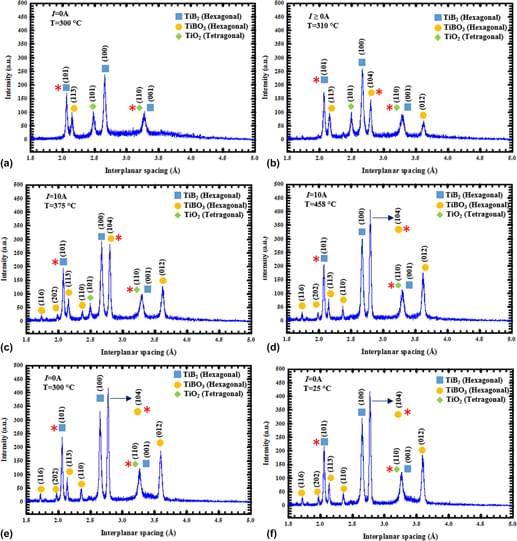Crossref Citations
This article has been cited by the following publications. This list is generated based on data provided by
Crossref.
Bicer, Hulya
Beyoglu, Berra
Ozdemir, T. Ertugrul
Okasinski, John
and
Tsakalakos, Thomas
2019.
Direct in situ observation of electric field assisted densification of ZnO by energy dispersive X-ray diffraction.
Ceramics International,
Vol. 45,
Issue. 6,
p.
7614.
Perez-Maqueda, Luis A.
Gil-Gonzalez, Eva
Wassel, Mary Anne
Jha, Shikhar K.
Perejon, Antonio
Charalambous, Harry
Okasinski, John
Sanchez-Jimenez, Pedro E.
and
Tsakalakos, Thomas
2019.
Insight into the BiFeO3 flash sintering process by in-situ energy dispersive X-ray diffraction (ED-XRD).
Ceramics International,
Vol. 45,
Issue. 2,
p.
2828.
Biesuz, Mattia
and
Sglavo, Vincenzo M.
2020.
Beyond flash sintering: How the flash event could change ceramics and glass processing.
Scripta Materialia,
Vol. 187,
Issue. ,
p.
49.
Biçer, Hülya
Degnah, Ahmed
Salur, Emin
Şavklıyıldız, İlyas
Tsakalakos, Thomas
and
Akdoğan, E. Koray
2022.
Multicycle flash sintering of cubic Y2O3-stabilized ZrO2: An in situ energy dispersive synchrotron x-ray diffraction study with high temporal resolution.
Materials Today Communications,
Vol. 33,
Issue. ,
p.
104272.
Zhang, Shijie
Dai, Meng
Guo, Jian
Wang, Guangzhao
Wang, Shuguang
and
He, Zuoli
2022.
Stable Ti3+ in B-TiO2/BN based hybrids for efficient photocatalytic reduction.
Chemical Engineering Journal Advances,
Vol. 11,
Issue. ,
p.
100333.
Şavklıyıldız, İlyas
Degnah, Ahmed
Biçer, Hülya
Salur, Emin
Tsakalakos, Thomas
and
Akdoğan, Enver Koray
2023.
Anatomy of flash sintering in yttria-stabilized zirconia solid-state electrolyte: High temporal resolution energy-dispersive X-ray diffraction using a 200 keV synchrotron probe.
Journal of Materials Research,
Vol. 38,
Issue. 6,
p.
1583.
Najafian, Hediyeh
Salehi, Hadi
Ghadimi, Zohreh
Saraf, Amir Hossein
Mazaheri, Yousef
and
Esfahani, Hamid
2024.
Reinforced Cu sheets with accumulative roll bonding process in assisting nanostructured composite of low and high boron contents; Effects of morphology and composition of reinforcement.
Materials Today Communications,
Vol. 39,
Issue. ,
p.
108868.
Çetinkaya, Zeynep
Gökhan, Arici
Dursun, Sami
and
Şavkliyildiz, İlyas
2024.
Reusing blended leach residue by flash sintering method.
International Journal of Applied Ceramic Technology,
Vol. 21,
Issue. 3,
p.
1567.
Abdelgawad, Mohamed Mahrous
and
Biçer, Hülya
2024.
Synthesis of TiB2 powders by borothermal and carbothermal reduction of TiO2.
Processing and Application of Ceramics,
Vol. 18,
Issue. 2,
p.
196.
